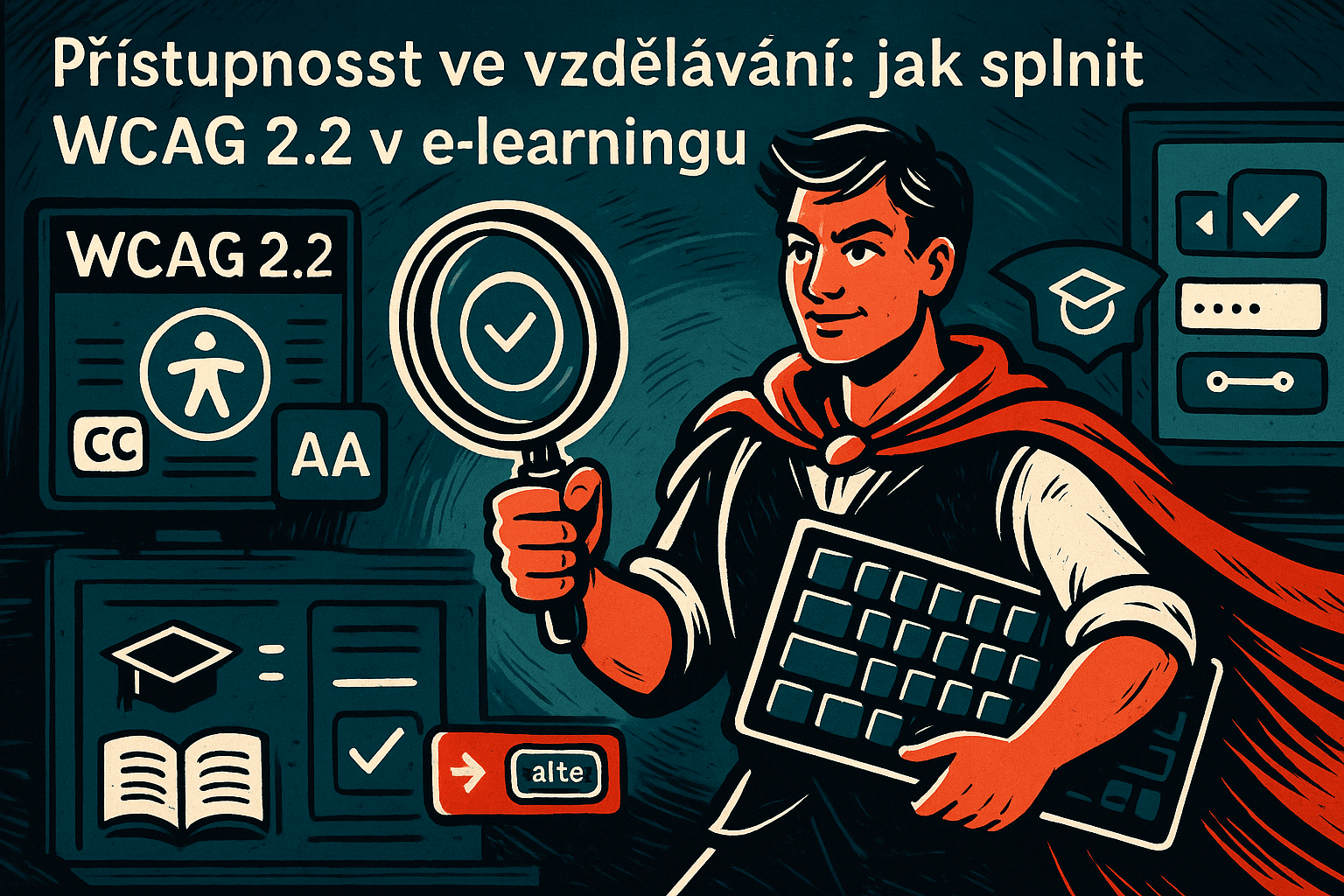xAPI and the future of data tracking in e-learning
(or why it is no longer enough to know if a user has taken a course and passed a test)
For many years, the e-learning world relied on SCORM (Sharable Content Object Reference Model), which was enough for companies to know whether their employees completed a course and how they did in tests. It may be functional for regular online training, but the times have moved on. Learning is no longer just happening in traditional courses and browsers. We are increasingly using mobile apps, virtual reality, webinars or microlearning platforms. And it is to capture all of this that xAPI (formerly known as Tin Can API) was created. In this article, we take a look at what xAPI can do, why it goes beyond SCORM, and how it may shape the future of corporate e-learning.
Why SCORM is proving inadequate
SCORM was a revolution in its day - we could finally transfer courses between different LMSs, track completion percentages and test scores. But SCORM:
- Tracks mainly the progression through the course pages: the basic linear model (page 1 -> page 2 -> page 3...) and the final test at the end of the course.
- Browser-bound: You need the content to run within a web window with communication between the LMS and the course (usually using JavaScript).
- Provides limited data: Has the course been completed? With what result? How much time did he/she spend studying? We get answers to all of these. But what was going on inside the course, which specific tasks or activities did the user study, which did he skip? This is no longer addressed by SCORM.
It's just that e-learning is no longer about clicking through linear presentations. People want to be able to engage in interactive simulations, participate in group activities, create branching scenarios, or learn via a VR headset or mobile phone with offline mode. This is where SCORM (or its reporting capabilities) comes in.
What is xAPI and how is it different
xAPI (Experience API) comes with the idea that we should be able to record virtually any learning or support activity - whether it takes place in a browser, in a mobile app, in the real world (offline workshop), or perhaps in virtual reality.
At the heart of xAPI are "statements" (informational messages) like:
- "User A completed the Leadership Essentials module with a 90% pass rate."
- "User B watched the Working in CRM video for 5 minutes."
- "User C answered the Data Security question correctly."
These statements can be adapted to almost any situation. The data is stored in what is called the LRS (Learning Record Store), which is a database where all xAPI records from various sources are recorded.
Key advantages of xAPI over SCORM
- Browser independence: The user can study on a mobile, VR glasses, offline application... And once connected to the internet, the data (statements) are sent to the LRS.
- Much more detailed information: We track not only the completion of the course, but also which parts of the content the student was interested in, whether he/she engaged in the discussion, how long he/she was active in the simulation.
- Support for different scenarios: We can record offline activities (e.g., workshop participation) as well, just transfer the information into xAPI format.
What is the purpose of such data
Detailed information about how people learn allows companies to better understand what works and what doesn't. For example:
- Content personalization: If xAPI shows that an employee is struggling on specific topics, the LMS (or Learning Experience Platform) can recommend appropriate supplemental courses or materials.
- Wider Context Tracking: We can link learning data to work outcomes. For example, to see if those who have undergone certain training have improved their performance in real work.
- Microlearning and adaptive learning: xAPI data can tell you that a 5-minute video is more effective than a long 30-minute recording - or vice versa. The system can adapt courses accordingly.
How to implement xAPI in a company
- Check the LMS: Does your current system support xAPI? If yes, to what extent? Does it support full integration of LRS functionalities or is it only partially supported?
- Choose the appropriate LRS: Learning Record Store can be part of the LMS or a standalone service. Depending on how much advanced data evaluation you need.
- Prioritize: Not everything needs to be measured in minute detail. Think about which data is key for you (e.g. time spent in a key module, success rates in tests, engagement in discussions).
- Start with a pilot project: Try implementing xAPI in one course or pilot group and see what the data analysis tells you. Gradually add more activities and applications.
The future of e-learning and xAPI
In the world of e-learning, xAPI is seen as one of the biggest steps forward after SCORM. Companies want to embrace learning comprehensively - from formal courses to informal know-how sharing to hands-on projects. The more technology develops (mobile, VR, AI...), the more it makes sense to have a standard that can "name" everything and enter it into a single database.
xAPI thus opens the door to advanced Llearning analytics, adaptive learning and detailed reporting. After all, if we have data on every significant interaction, we can gain a deeper understanding of what actually helps people in practice and what is more of a formal burden.
Does xAPI make sense to you?
SCORM has been around a long time and has done a great job, but the world of education today is much richer and more diverse than linear browser-based courses. xAPI is the key to enabling a company to track and evaluate learning across different devices and situations, and to make that evaluation with the real drive to better corporate learning.
It's also important to think about exactly what you want to measure. Aeven the best standard won't help you if you don't know how you'll interpret the data you collect and what goals the analysis will pursue.
If you are deciding whether and how to incorporate xAPI, we recommend exploring LMSs that support this functionality.







